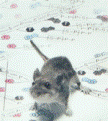Papers in the Biological Sciences

Jay F. Storz Publications
Document Type
Article
Date of this Version
2012
Citation
PNAS Early Edition 5/15/2012; doi: 10.1073/pnas.1120523109
Abstract
In response to hypoxic stress, many animals compensate for a reduced cellular O2 supply by suppressing total metabolism, thereby reducing O2 demand. For small endotherms that are native to high-altitude environments, this is not always a viable strategy, as the capacity for sustained aerobic thermogenesis is critical for survival during periods of prolonged cold stress. For example, survivorship studies of deer mice (Peromyscus maniculatus) have demonstrated that thermogenic capacity is under strong directional selection at high altitude. Here, we integrate measures of whole-organism thermogenic performance with measures of metabolic enzyme activities and genomic transcriptional profiles to examine the mechanistic underpinnings of adaptive variation in this complex trait in deer mice that are native to different elevations.We demonstrate that highland deer mice have an enhanced thermogenic capacity under hypoxia compared with lowland conspecifics and a closely related lowland species, Peromyscus leucopus. Our findings suggest that the enhanced thermogenic performance of highland deer mice is largely attributable to an increased capacity to oxidize lipids as a primary metabolic fuel source. This enhanced capacity for aerobic thermogenesis is associated with elevated activities of muscle metabolic enzymes that influence flux through fatty-acid oxidation and oxidative phosphorylation pathways in high-altitude deer mice and by concomitant changes in the expression of genes in these same pathways. Contrary to predictions derived from studies of humans at high altitude, our results suggest that selection to sustain prolonged thermogenesis under hypoxia promotes a shift in metabolic fuel use in favor of lipids over carbohydrates.


Comments
Includes supporting information.